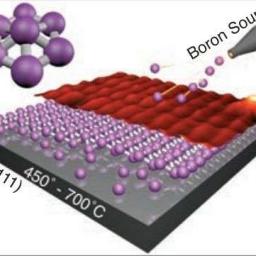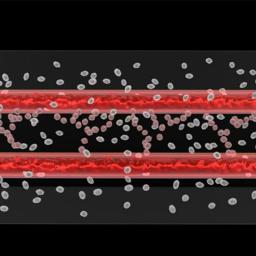Scientists have generated the
fastest electric current that has ever been measured inside a solid material. They made electrons in silicon dioxide oscillate with ultrafast laser pulses. The detected electric currents are approximately one million times faster than those widely used in a modern computer processor.
The researchers are also interested in exploring the physical limits: "As electrons move coherently they also generate light which is the key element of photonics. For this reason we may soon be able to unify two important areas of modern science and technology: electronics and photonics," Goulielmakis says. At the same time, the approach could pave the way for electronic devices which are one million times faster than those available today.
The possibility of having light replace conventional sources of electricity, such as batteries in order to generate electric currents inside solid materials, has captured the imagination of scientists for more than a century. The attempts to observe currents in solid materials by shining light on them have remained without any success for the past few decades. "Today, however, control of matter with lasers is rapidly advancing and the capability to measure light fields with ever finer precision has turned to reality."
Since 2012,
neuropathologist Daniel Perl has advocated for this theory: specifically that
blast waves caused physical damage at the intersection of the brain's gray matter and white matter , where microscopic analysis of the brains of former soldiers who suffered from PTSD reveals a "brown dust" of scarring, in regions that are neuroanatomically associated with sleep and cognition.
Perl and his team examined brains of service members who died well after their blast exposure, including a highly decorated Special Operations Forces soldier who committed suicide. All of them had the same pattern of scarring in the same places, which appeared to correspond to the brain's centers for sleep, cognition and other classic brain-injury trouble spots.
Ibolja Cernak is a Bosnian scientist who conducted a study on 1,300 veterans of the Bosnian/Serbian conflict, which confirmed much of Perl's hypothesis. Adherents of this hypothesis believe that the action of a blast weakens the material connections at their intersections -- perhaps by compressing the body and forcing blood into the brain, putting a "shearing load on brain tissues."
A portable device may allow doctors to
create single doses of biopharmaceutical medications on demand, potentially speeding the treatment of diseases that include diabetes and cancer. The system,
described in the journal Nature Communications, can currently produce two biologic drugs from a single yeast strain in the device, creating near-single-dose production in less than 24 hours with limited infrastructure.
The potential use for the device is significant, as it can be used for everything from treatments on a battlefield where immediate care is required to prevention of a disease outbreak in a remote village, said Tim Lu, an associate professor of biological engineering and electrical engineering and computer science at MIT.
"Imagine you were on Mars or in a remote desert, without access to a full formulary, you could program the yeast to produce drugs on demand locally," Lu said.
The emails offer a rare glimpse into a world where corporate interests can dictate their own science and scientists for hire willingly oblige. It's a phenomenon that's grown in recent decades as government-funded science dwindles. Its effects are felt not only in courtrooms but also in regulatory agencies that issue rules to try to prevent disease. The National Institutes of Health's budget for research grants has fallen 14 percent since its peak in 2004, according to the American Association for the Advancement of Science. With scarce resources, there's little money for academics to study chemicals that most already deem to be toxic. Yet regulatory officials and attorneys say companies have a strong financial interest in continuing to publish research favorable to industry.
Gradient belongs to a breed of scientific consulting firms that defends the products of its corporate clients beyond credulity, even exhaustively studied substances whose dangers are not in doubt, such as asbestos, lead and arsenic. Nearly half of Gradient's articles that are peer-reviewed are published in two journals with strong ties to industry, Critical Reviews in Toxicology and Regulatory Toxicology and Pharmacology. Gradient's scientists rarely acknowledge that a chemical poses a serious public health risk. The Center for Public Integrity analyzed 149 scientific articles and letters published by the firm's most prolific principal scientists. Ninety-eight percent of the time, they found that the substance in question was harmless at levels to which people are typically exposed. "They truly are the epitome of rented white coats."
http://www.publicintegrity.org/2016/02/08/19223/meet-rented-white-coats-who-defend-toxic-chemicals
A team of scientists has, for the first time,
created a two-dimensional sheet of boron. This new 2D material is named as borophene.
Scientists have been interested in two-dimensional materials for their unique characteristics, particularly involving their electronic properties. Borophene is an unusual material because it shows many metallic properties at the nanoscale even though three-dimensional, or bulk, boron is nonmetallic and semiconducting.
Scientists have turned individual cells into miniature lasers by injecting them with droplets of oil or fat mixed with a fluorescent dye that can be activated by short pulses of light. This finding could help to broaden how light is used for both medical diagnosis and treatment. The system was devised by Harvard Medical School scientiest, and it uses droplets of fat or oil within a cell to reflect and amplify light, generating a laser. Conventional luminescent probes, which include fluorescent dyes and proteins, have relatively broad emission spectra. This limits the number of probes that can be used simultaneously, because it is often difficult to distinguish these sources of luminescence from the broad background emissions of naturally occurring molecules in tissue.
http://www.deccanherald.com/content/494474/oil-droplets-turn-cells-tiny.html
Blood vessels are vital parts of the body's circulatory system that supply the organs with nutrients and remove waste. Scientists have developed artificial tissue from the heart, liver and lungs, but creating a synthetic network of blood vessels to support these organs has been a challenge. Scientists from the Universities of Sydney, Harvard, Stanford and MIT have been working together to overcome this challenge. Now, the researchers have created 'live' artificial blood vessels in a lab using 3D-printing methods.
Right now, the actual structures don't bear much resemblance to what you'd find in a person -- you get a "spaghetti bowl" of vessels. Scientists hope to organize these vessels the way they exist in nature, though. If that happens, you could one day see artificial tissue samples and even transplants that are about as realistic as you can get.
http://www.engadget.com/2015/12/06/scientists-3d-print-live-blood-vessels/Algae has been genetically engineered to kill cancer cells without harming healthy cells. The algae nanoparticles, created by scientists in Australia, were found to
kill 90% of cancer cells in cultured human cells. The algae was also successful at killing cancer in mice with tumours.
"By genetically engineering diatom algae - tiny, unicellular, photosynthesising algae with a skeleton made of nanoporous silica, we are able to produce an antibody-binding protein on the surface of their shells. Anti-cancer chemotherapeutic drugs are often toxic to normal tissues. [...]To minimise the off-target toxicity, the drugs can be hidden inside the antibody-coated nanoparticles. The antibody binds only to molecules found on cancer cells, thus delivering the toxic drug specifically to the target cells."
As the availability of clean, potable water becomes an increasingly urgent issue in many parts of the world, researchers are searching for new ways to treat salty, brackish or contaminated water to make it usable. Now a team at MIT has come up with an innovative approach that, unlike most traditional desalination systems, does not separate ions or water molecules with filters, which can become clogged, or boiling, which consumes great amounts of energy.
Instead, the system uses an electrically driven shockwave within a stream of flowing water, which pushes salty water to one side of the flow and fresh water to the other, allowing easy separation of the two streams.
According to the researchers, this approach is a fundamentally new and different separation system. Unlike most other approaches to desalination or water purification, this one performs a "membraneless separation" of ions and particles.
Membranes in traditional desalination systems, such as those that use reverse osmosis or electrodialysis, are "selective barriers".
They allow molecules of water to pass through, but block the larger sodium and chlorine atoms of salt. Compared to conventional electrodialysis, "This process looks similar, but it's fundamentally different,"
https://www.youtube.com/watch?v=pmh-DvCmJDs&list=PLK2ccNIJVPpB_XqWWq_oaZGIDzmKiSkYc
